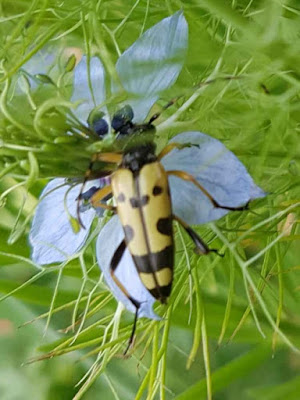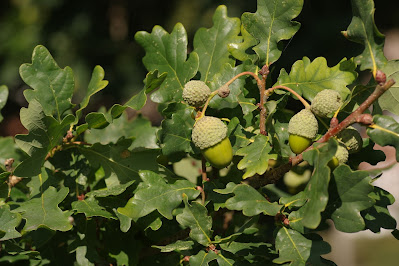The year started normally, with the now traditional BSBI New Year Plant hunt. I found a few plants in flower outside Barney's Play Barn. Not only was the Field Penny Cress (Thlaspi arvense) new to my personal species list but it was new for Uckfield's "square" on the map.
Another new entry was Winter Heliotrope (Petasites fragrans). For the first time, I noticed the great mass of it on the London Road, just South of the Ringles.
February winds often blow branches down, bringing lichens to my level. The one shown is Lecidella elaeochroma, with its distinctive black fruiting bodies.
Common Pincushion moss - 7 March, Staplefield
At the beginning of March, I went to the Sussex Botanical Recording Society meeting at Staplefield. For those that don't remember the "before times", a meeting is when loads of people get together to discuss matters of common interest. In this case it also entailed a visit to a "pub" where a group of botanists shared a convivial meal. On a wall at its entrance, I found a species of moss that I had not noticed before, the Common Pincushion (Dicranoweisia cirrata).
A week or two after this, Covid 19 started spreading across the country and the Government directed us to "lockdown". A few weeks later, the Botanical Society of Britain and Ireland responded by asking people to do the BSBI Garden Wildflower Hunt. Between April and September, I found over a hundred species including a couple that I have never encountered before. I suspect that the Canary Grass (Phalaris canariensis) shown is from some stray bird seed. It even won me a little prize in a photo competition.
Spotted Longhorn beetle - 14 Jun, Uckfield
Summer brought all manor of flying insects to the garden including the Spotted Longhorn beetle (Rutpela maculata).
In the first few months of the pandemic, I wasn't happy about the gardener coming to mow the grass. Although I mowed it myself, I left more of the flowers, including the Yarrow (Achillea millefolium), to bloom. As a reward, I was treated to visits from a Tawny Longhorn beetle (Paracorymbia fulva).
As we moved into summer, moths started to appear. Mum found one of our new species, an Orange Swift (Triodia sylvina) in our kitchen.
In September, Mum and I finally managed a proper outing, to Ashdown Forest. After enjoying the views and catching a glimpse of what might have been a Red Kite, I noticed this little Broom Fork-moss (Dicranum scoparium) growing by the path back to the car park.

















































